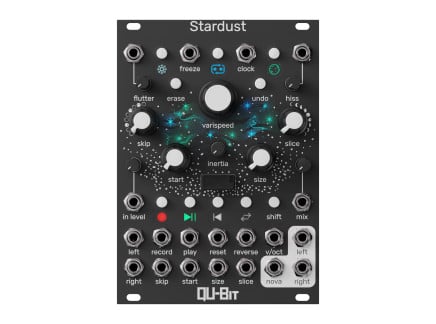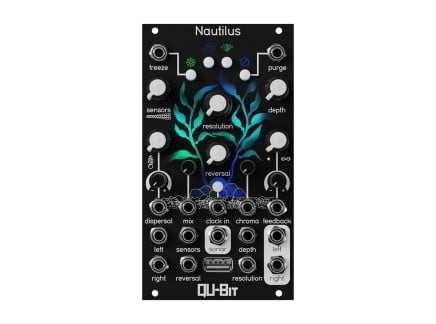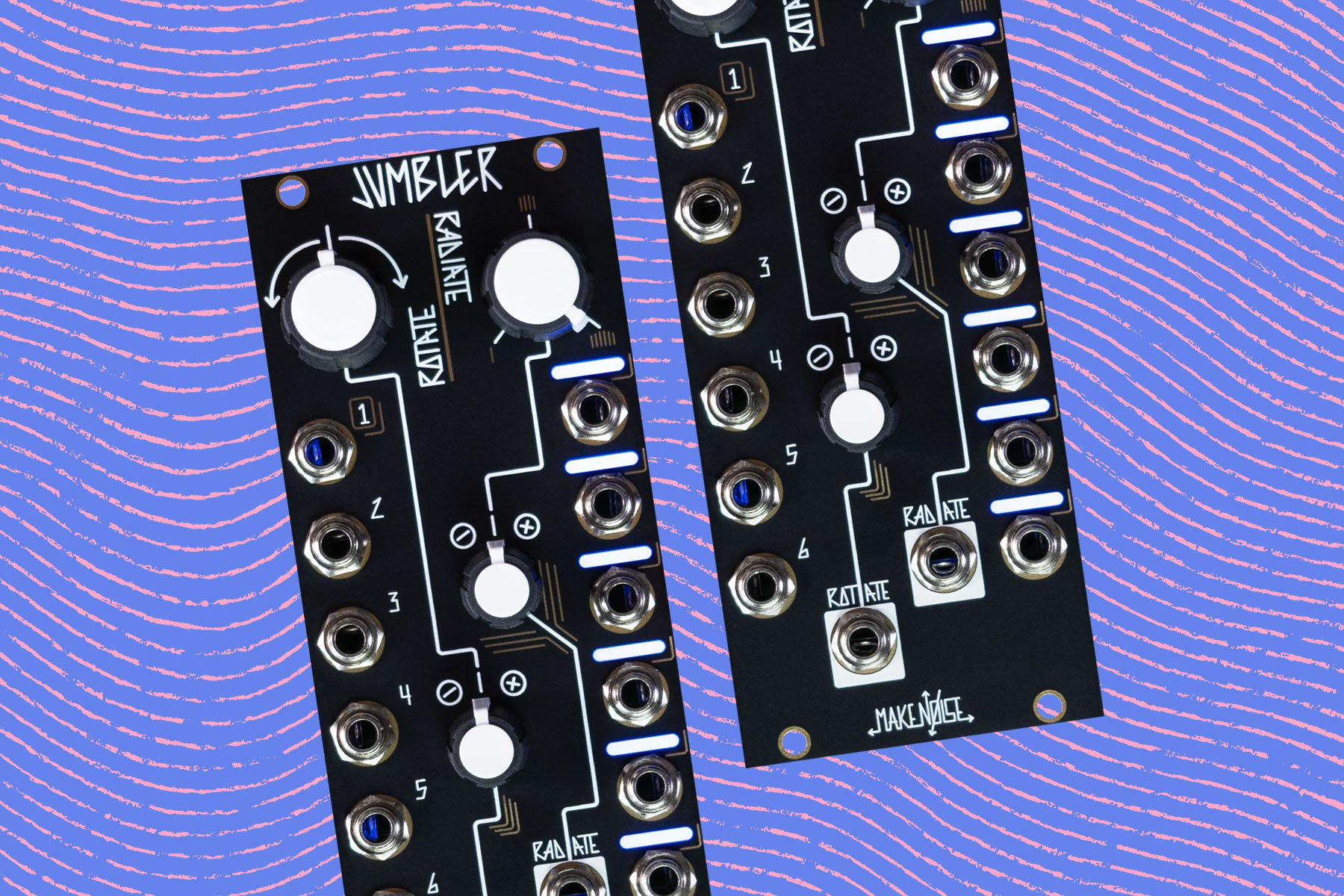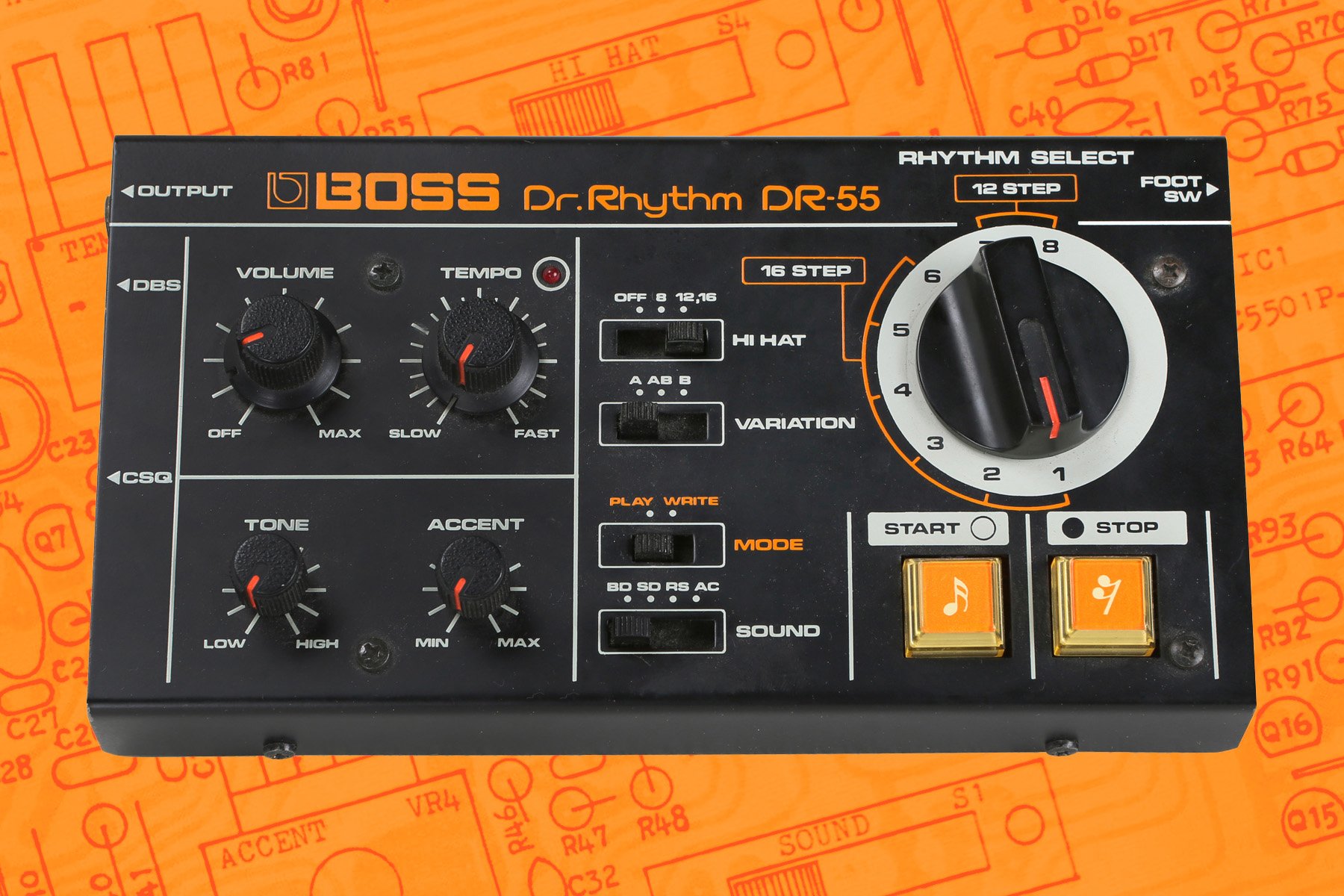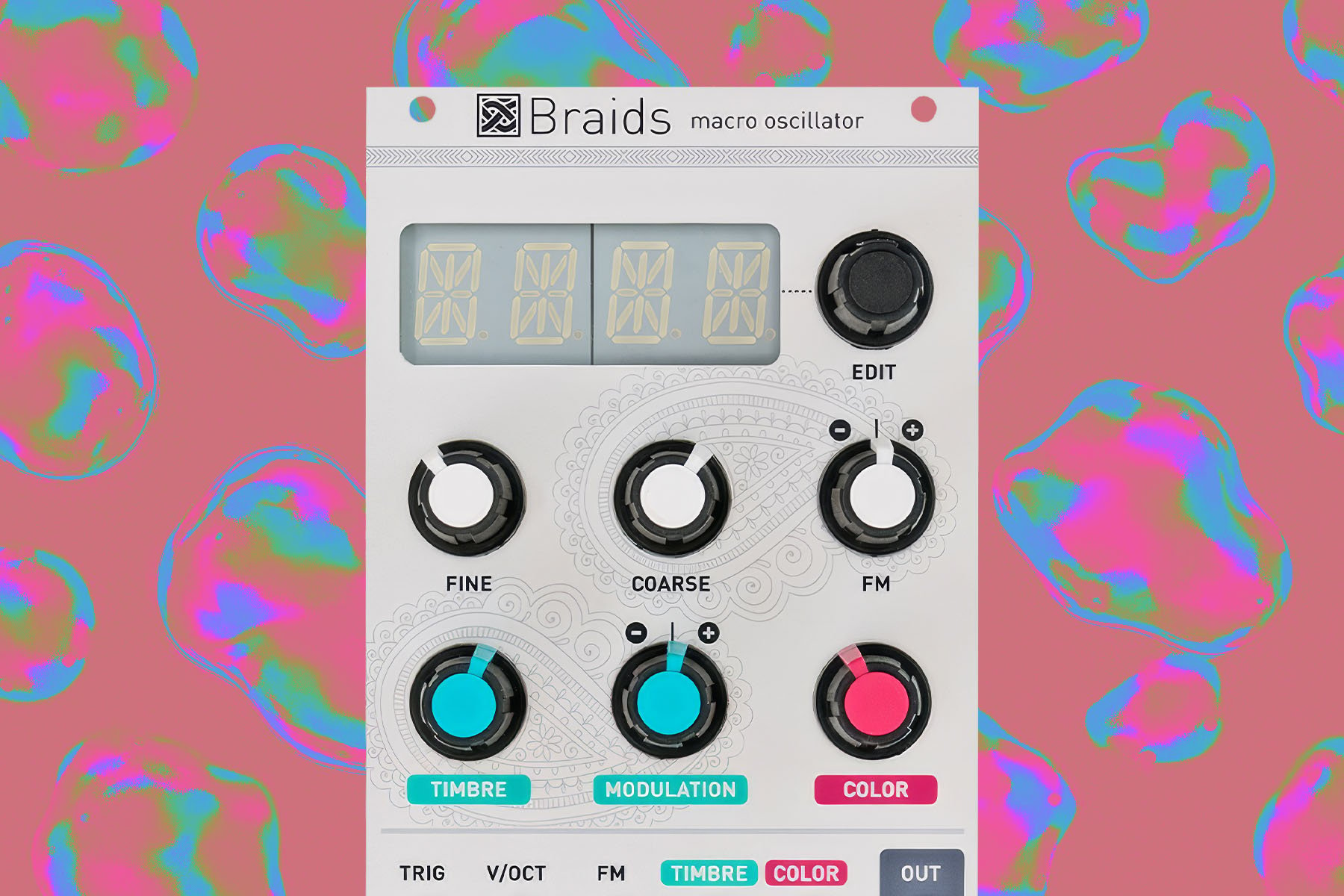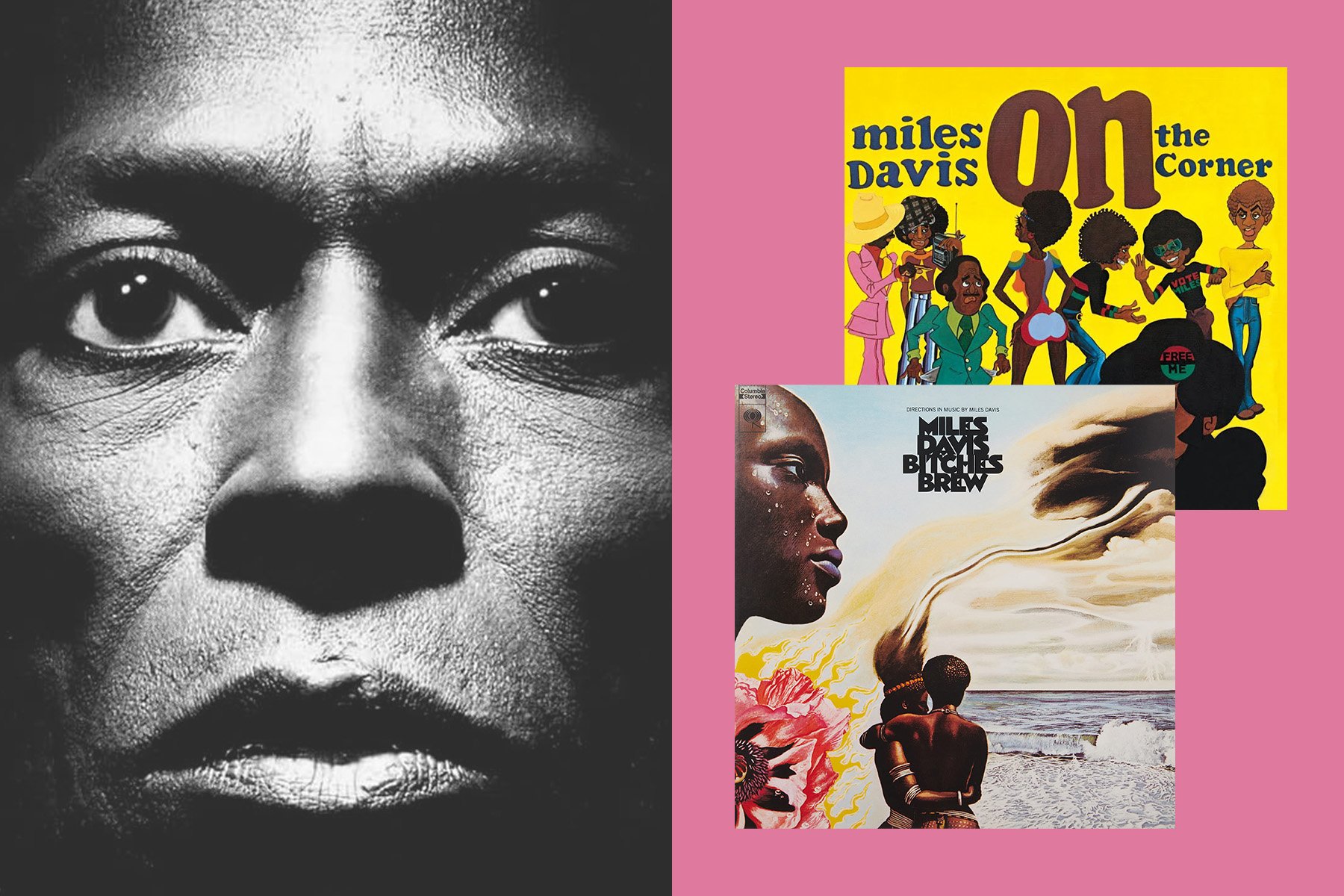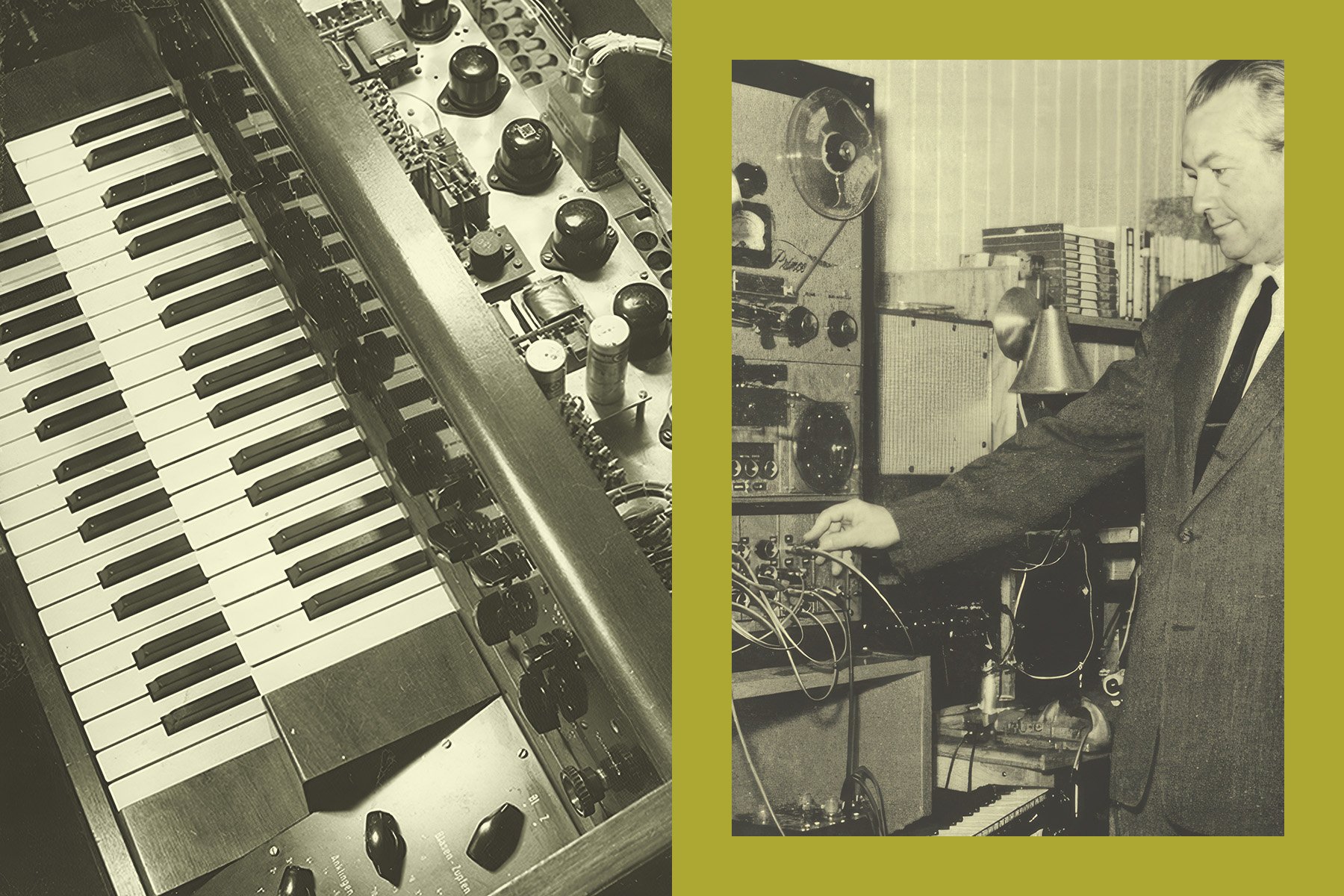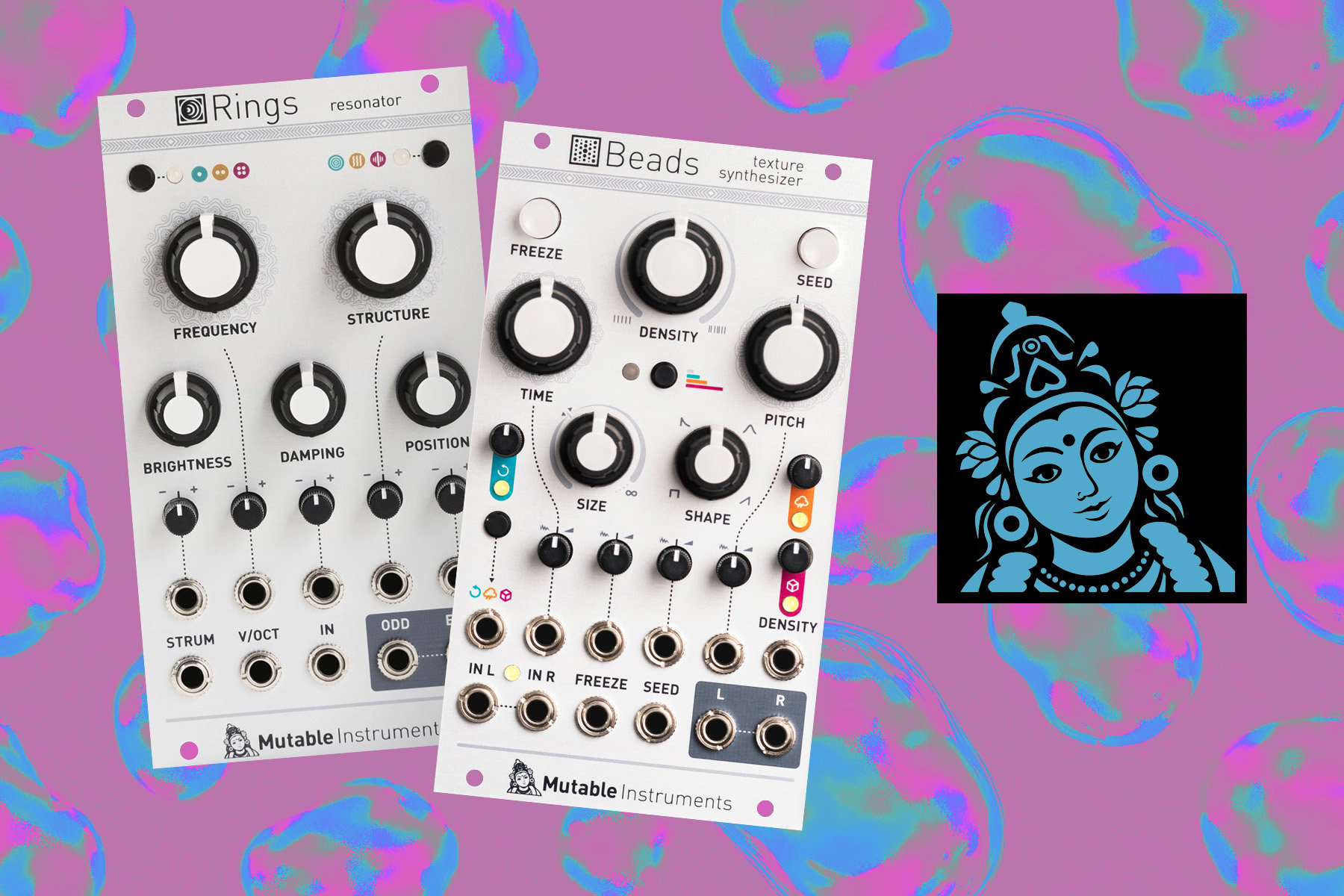In case you haven't been following their work in the past few years, Qu-Bit Electronix have been nailing down some of the essential digital module archetypes—and not without some unique twists. Recent highlights include Nautilus, which provides intricate multi-tap delay networks, and Mojave, a new contender for the go-to live granular processor. But excluding their adept phase vocoder-based sampler Nebulae, looping isn't something that Qu-Bit has touched on in any of their designs... until now.
Today Qu-Bit has unveiled Stardust, a self-described Cosmic Looper born from the philosophies of tape-style looping. But of course, Stardust leverages its digital architecture to go well-beyond what could be reasonably or physically possible with real tape. Additional DSP effects, dynamic splicing, multiple looping modes, and easy import/export of loops via the USB drive open endless sonic possibilities.
To commemorate the release of this module, we've invited Qu-Bit Electronix CEO Andrew Ikenberry back to our SIGNAL blog to chat about all things Stardust. As always, Andrew offers some clear insight into his goals while designing the module, and elaborates on some of the ways you would be able to get creative with Stardust in the context of your own Eurorack system.
An Interview with Andrew ikenberry from Qu-Bit Electronix
Jacob Johnson: Hello Andrew! We're glad to be speaking with you again as we welcome Stardust into our celestial neighborhood. What prompted you to sit down and develop a looper for the Qu-Bit catalog?
Andrew Ikenberry: Hello! It’s great to be speaking with you about Stardust.
Believe it or not, we’ve actually been working on this concept off and on for over six years!
Loopers are one of those notoriously difficult things to design. There are so many potential features that it’s easy to lose the forest among the trees. The story that we really wanted to tell with Stardust was about the complex interplay between classic looper functionality, tape emulation effects, and digital buffer mangling. Once we nailed down a concept that encompassed those three areas, we knew we finally had the recipe for a powerful looper design.

JJ: I firmly believe that loopers are among the most personal of tools that are employed by musicians of all styles. What were your personal goals for Stardust? Were there any features or parameters that you wanted to be included from the start?
AI: My personal goal was to focus extensively on the way the module sounded and felt as opposed to just the logistics of the looping engine. The texture and feel of the audio were just as important as how it captured audio. To that end, we spent a lot of time refining things like tape saturation, crackles and pops, wow & flutter etc. to really fine tune the overall vibe of each recording.
JJ: Stardust perhaps began within the paradigm of analog tape-style looping. But being built on the lovely Daisy DSP platform, Stardust isn't subjected to the same burdens of material existence as a real-life tape deck. What are some of the ways that Stardust turns the idea of "tape looping" on its (play)head? The ability to be clocked is one thing that comes to mind.
AI: There are a few unique features that we were really excited to add to Stardust. The first big one that comes to mind is the undo feature. This is a feature that I’ve wished for countless times on other loopers. No matter how careful you are when doing overdubs, there’s always a time when you want to redo it, and undo gives you this power. Another neat feature is that Stardust automatically saves your audio buffer in between power cycles. No more ephemeral loop sessions only to be lost to the ether on your next power down. And you can even bounce it to the USB flash drive on the front of the module as a .wav file for further processing.

JJ: One interesting aspect of Stardust is its various Loop Modes, which affect both the way that audio is recorded into the digital tape as well as, in some modes, how it persists over time. How do these different Loop Modes bring more variety to Stardust's looping toolkit? Do you have a favorite mode, or perhaps adjust your patching style depending on how you have Stardust configured?
AI: The different Loop Modes really turn Stardust into four powerful modules in one. I tend to use all of the modes in different patches, but there are 2 standouts for me. My personal favorite is Resample mode. When using this configuration, Stardust starts recording your audio output into a new audio buffer. All parameter changes are recorded in real time into the new buffer, allowing you to performatively create new soundscapes on the fly. And the beautiful part is that you’re not limited by your original loop length since it’s recording into a new buffer entirely. I’ve found this to be a powerful sound design tool and a blast to play around with when I want to go exploring for new sounds.
The second mode that I really enjoy is Frippertronics. This mode implements the classic tape effect pioneered by Robert Fripp in the 1970s. What I really love about this mode is that it’s a hybrid between a delay and a looper and anytime you change the pitch or size of the loop, you introduce all kinds of instability into the system which in turn creates these amazing warble types of artifacts in the audio.
JJ: Beyond basic looping functionality, a lot of folks are chasing a certain "vibe" within their loopers—especially on anything based on tape-looping in one way or another. Stardust features controls like Inertia, Flutter, and Hiss which can inject some level of tape-like character into your loops. How was this modeled, and where does this go into totally new sonic territories?
AI: This aspect of Stardust was certainly a driving force for us. We wanted to make sure that we were “setting the scene” so to speak, not just by using varispeed pitch controls, or tape deck playhead emulation, but by actually modeling the sonic characteristics and imperfections that tape introduces. The Hiss control is a key component of this philosophy and adds various types of noise and filtering to the audio. As you move across the knob you’ll enter various zones that correspond to cassette hiss, vinyl crackles and pops, and tape compression / filtering. It is truly incredible how much depth these things add to a digital audio buffer, and consequently how much more musical your loops will sound.
JJ: Tell us about Stardust's Slice and Skip controls. It seems like dynamically allocating and moving between virtual tape splices would be a lot of fun! One thing that I'm personally curious about is how this functionality interacts with audio actively being recorded into Stardust's buffer.
AI: I’ve always felt that as beautiful as tape is for music making, it’s a technique better emulated in the digital domain because you can take advantage of the unique buffer shuffling techniques that digital audio has to offer. One unique feature on Stardust is that when the Skip and Slice controls are being used and you’re recording into the buffer, the new audio is recorded to the current playhead position based on Skip and Slice. This is perfect for adding aleatoric overdubs to your loops and leaves entirely new sounds in the buffer even after turning down the Skip and Slice knobs.
JJ: It's quite clear that Stardust is an incredibly open-ended looping platform. We've touched on most of Stardust's panel controls, but there's a whole secondary Shift layer accessible as well! Obviously some of these are strictly for device functions like firmware updates, but others like Varispeed octave jumping sound like a blast. How did you approach parameterization as development progressed? Is performatively accessing select Shift parameters viable for real-time looping and music-making?
AI: The shift parameters add a lot of depth to Stardust and we spent a lot of time ironing out which parameters deserve direct front panel access and which ones could be relegated to a shift function without degrading the workflow. The varispeed octave jumping actually retained a lot of performative capabilities due to the physical positioning of the shift button and varispeed knob. I find myself using it fairly often during Resample mode recording for adding disparate pitch changes that are still tonal.

JJ: As someone who has spent countless hours fiddling with looper pedals, modules, plug-ins, and custom systems in Max/MSP/gen~, I know it can take a lot of work to dial things in and iron out clicks, quirks, and glitches. Maintaining responsiveness is also key, especially in a modular environment where real-time control voltages are at play. Were there any particularly memorable challenges that emerged during Stardust development?
AI: Removing clicks from audio is always a challenge, but it was especially tough on Stardust. The more disjointed your playhead movement, the more invasive the clicks are going to be and there are a lot of chaotic playhead movements possible on Stardust. In the end though, it was time well spent and I think we’ve accomplished some of the smoothest, click-free audio transitions on any Qu-Bit design to date.
JJ: Of course, looping is Stardust's bread-and-butter. But Qu-Bit fans and power patchers may find looping utility in some of your other products, particularly Nebulae, Nautilus, and Mojave. Beyond the obvious differences in their implementations, how do you see these modules distinguishing each other as loopers?
AI: At their core, all of these modules manipulate high fidelity audio buffers. The key differentiator is the user interface, and the spirit of the instrument. While you can coerce looper tendencies out of Nautilus, it’s not going to allow you to easily minutes of audio, pitch it down 2 octaves, record a few overdubs, and then resample a live performance back into the module. The same can be said for the other designs. Even though they contain looper-esque functionality, they don’t excel at the looper workflow which is what we were aiming for on Stardust.
JJ: Stardust has the ability to save and load audio files. Being able to import any sound into Stardust's buffer is huge, but what do the exported audio files look like? I can imagine it would be fun to drop those into a DAW and build them out into full tracks.
AI: Exporting audio files in combination with Resample mode has been an absolute game-changer for me. I can now use Stardust as a performative sample mangler, and then bounce those recordings for future editing in a DAW. The audio files get bounced directly to the USB flash drive as 16-bit, 48kHz .wav files.

JJ: Tell us about the Nova output—we always love a good CV output on an audio processor module. Users can customize this output with Qu-Bit's web app Narwhal. What patching possibilities are unlocked with this output?
AI: It’s amazing how powerful a CV output is on an audio processor, and Nova doesn’t disappoint! The default setting is for a gate output at the end of each loop, or slice. This makes it easy to keep your loop in time with the rest of your patch. Where it gets really exciting is the alternative modes that you can open up using our web editor, Narwhal.
My personal favorite is Orbital mode which turns the Nova output into a CV generator where the voltage is mapped to the current playhead position. This gets really interesting when you turn up Skip and Slice because it turns into a chaotic CV signal which you can use to control other things in your patch, or even self patch back into Stardust!

